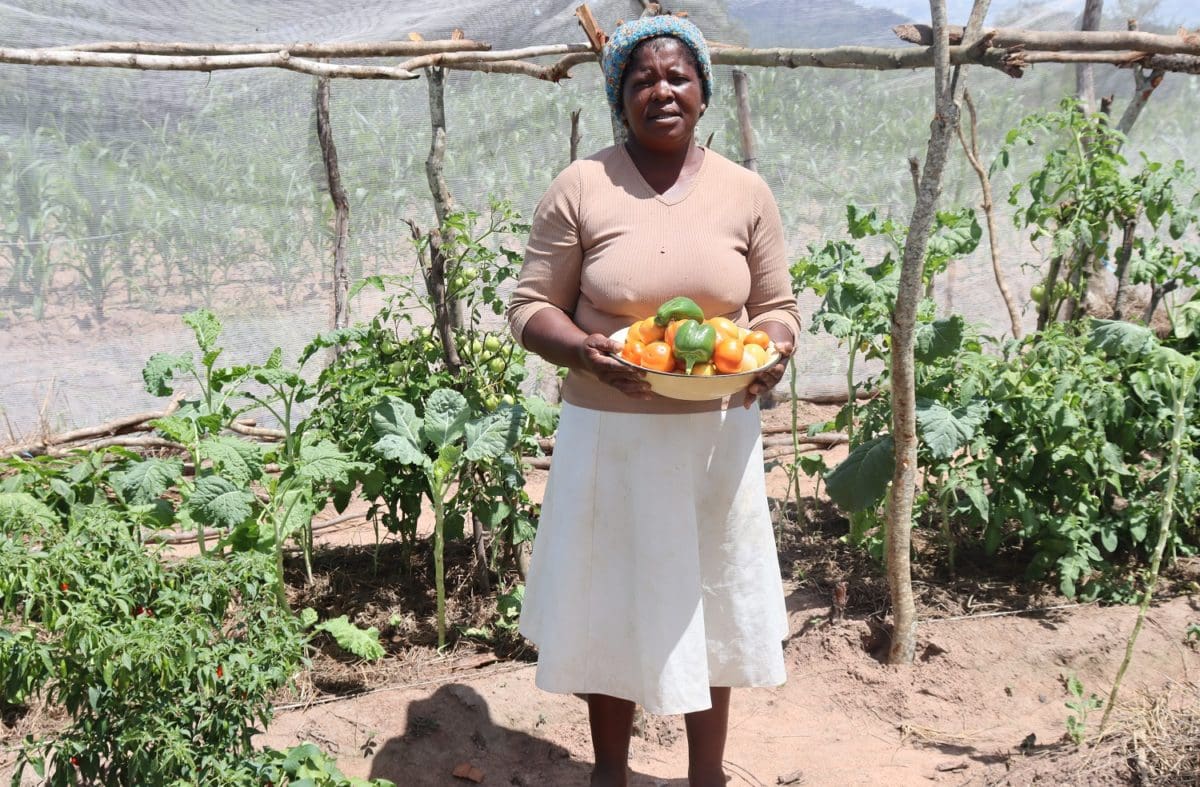Siphathisiwe: A Woman Driven to Succeed
With the free time added to her schedule, Siphathisiwe has committed to diversifying her sources of income, “I can sell the maize and vegetables from my garden. I have chickens, goats, and breed cattle. The income generated from projects contributes to my children’s education.”She encourages other women like her to adopt and incorporate the same resilience design systems and ensure the improvement of their livelihoods.
In 2012, SIPHATHISIWE SIBANDA-GODHINI (49) and her husband relocated to his home village in Ward 14, Zaka, from Gokwe. Six hundred kilometers from the home she knew in Sikhobokhobo (Nkayi), Siphathisiwe found herself alone and overwhelmed with five sons to raise as her husband decided to migrate to South Africa in search of better opportunities.
Written By: GODFREY MUVHUTI and TARIRO TSHUMA
Opting to farm to fend for her children, she found it would be a little more challenging to do than in her rural home, “This area is prone to low rainfall and, sometimes, we can’t even get water to drink. At times, my family and I fail to harvest our crops because our soil lacks nutrients, and I cannot access seed or fertilizer,” a frustrated Siphathisiwe says. As a result, she has to walk at least 7km to the nearest water source as there are no boreholes near her homestead.
Access to water is only one of the challenges the Godhini family faces,“On the rare occasions that we harvest our crop, we do not have market spaces where I can sell my produce.” Siphathiswe’s challenges are echoed by many women in both Manicaland and Masvingo provinces. Determined to change the fate of her family’s livelihood, Siphathisiwe joined a workshop to harness ways to increase agricultural productivity.
Motivated, Siphathisiwe says, “I learned how to create dead level contours, and on its edges, I planted different crops. In my permagarden, I learnt how to double dig and plant crops with higher nutritional value like spinach, green pepper, covo, and rape. I now know how to use a combination of fruit trees and a half-moon to maintain moisture in the soil. The training encouraged me to build a toilet, and I installed a tippy tap just outside it.”
Today, she walks purposefully through her maize field, slowing down briefly to inspect the maize one stalk. Pleased with the progress her maize crop has made, Siphathisiwe makes her way towards the permagarden, “After applying what I learned, I am confident that we will harvest more than we ever expected because the contours collected water and the plants harnessed the moisture brought by the water. I hope I will continue to farm this land because it has contributed to improving my family’s livelihood.”
Siphathisiwe walks into her permagarden, characterized by a fence made from a repurposed mosquito net her husband sent from South Africa. She picks up a yellow metal dish and begins to pick tomatoes, “I added more dead level contours, increased the number of doubles dug beds, and added beans to increase nutritional meal options for my family.”
This has impacted Siphathisiwe’s day-to-day life,“It has created more time for me to attend to other household tasks and participate at community meetings. I used to irrigate my garden every three days, and now I only do so once a week. This is because my family and I mulched our garden beds and installed sheds to slow down the impact of heat on our crops.”
With the free time added to her schedule, Siphathisiwe has committed to diversifying her sources of income, “I can sell the maize and vegetables from my garden. I have chickens, goats, and breed cattle. The income generated from projects contributes to my children’s education.”She encourages other women like her to adopt and incorporate the same resilience design systems and ensure the improvement of their livelihoods.

